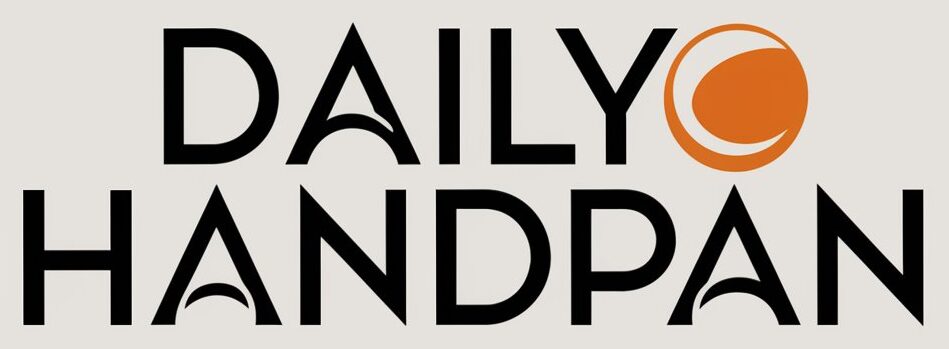The handpan, also known as a hang drum, is a captivating instrument that has enchanted musicians and listeners alike. Its ethereal and resonant sound takes the listener on a serene journey, often evoking a sense of tranquility and introspection. Central to the handpan’s charm is its unique tuning system, which features a variety of scales designed to create different moods and atmospheres. In this article, we will delve deep into the mystical world of handpan scales, exploring their origins, types, and the distinctive emotional landscapes they create.
Origins of Handpan Scales
The handpan’s journey began in the early 2000s with the creation of the first Hang by Swiss inventors Felix Rohner and Sabina Schärer. They drew inspiration from steelpan drums, gongs, and other resonant instruments from diverse cultures. The creators developed a pentatonic scale that could be played intuitively by almost anyone. The scales of the handpan are not just about notes; they are about blending the physics of sound with human emotion.
Understanding Handpan Scale Types
Handpan scales are often categorized by their tonality and cultural origins. Here are some of the most popular handpan scales:
1. Major Scales
Major scales are known for their uplifting and joyful vibes. They produce harmonious and bright tones, making them perfect for creating an atmosphere of happiness and positivity. Typical major scales used in handpans include D Major and C Major.
2. Minor Scales
Minor scales reflect more somber, introspective, and sometimes melancholic feelings. These scales delve deep into the emotional spectrum, creating sounds that are meditative and reflective. Examples include D Minor and E Minor.
3. Exotic Scales
Exotic scales draw from various ethnic and traditional musical frameworks around the world. These scales bring a unique flavor and mystique to the handpan, featuring unconventional intervals and structures. Examples are the Akebono scale (Japanese) and the Hijaz scale (Middle Eastern).
4. Chromatic Scales
Chromatic scales contain all twelve pitches of the octave, extending the handpan’s versatility. Such scales are uncommon due to the complexity involved in the playing technique and tuning.
The Emotional Landscape of Handpan Scales
Each handpan scale has its own emotional resonance. Here’s a deeper look into the emotional qualities conveyed by different scales:
1. Meditative and Calm
Scales in minor keys often produce a meditative and calm ambiance. They have a soothing effect that can help with relaxation and mental clarity. Playing in a D Minor or a Dorian scale can lead to deeply moving and introspective experiences.
2. Joyful and Uplifting
Major scales bring joy and uplifting emotions. They are perfect for outdoor performances or social gatherings where the goal is to spread happiness and positive energy. Handpans tuned to G Major or C Major emit a bright, optimistic tone.
3. Mysterious and Exotic
Exotic scales provide a sense of mystery and allure. They can transport listeners to different landscapes, from ancient times to mystical realms. Scales like Hijaz and Akebono captivate with their distinctly non-western tonal qualities.
4. Versatile and Complex
Chromatic scales offer a versatile and complex playing field. While challenging, they can express a wide array of emotions and transitions, providing musicians with the freedom to explore intricate and sophisticated compositions.
The Craftsmanship Behind Handpan Scales
Crafting a handpan involves intricate skill and deep understanding of acoustics. The creator carefully shapes each note to resonate at a specific pitch, ensuring harmonious overtones. This meticulous process can take days or even weeks.
The tuning of a handpan is not a one-time process – it requires regular maintenance to retain its purity of sound. A well-maintained handpan retains its perfect pitch, making it a timeless instrument.
Choosing the Right Handpan Scale for You
Selecting the right scale depends on personal preference, emotional intent, and the environment where you plan to play. Here is a guide to help you choose:
1. Self-Reflection
If you aim for introspection and meditation, a minor scale may suit your needs. The depth of minor tones supports a reflective and peaceful state.
2. Social Gatherings
For joyful and lively interactions, major scales work wonders. They bring a sense of unity and happiness, ideal for shared musical moments.
3. Cultural Exploration
If you want to explore musical sounds beyond Western traditions, an exotic scale may be your choice. These scales provide a rich tapestry of global music traditions.
4. Musical Experimentation
A chromatic scale is perfect for musicians looking to experiment with various tones and complex compositions. It offers a broad range for musical creativity.
Conclusion
The world of handpan scales is vast and mesmerizing. Each scale brings with it a unique set of emotional expressions and musical possibilities. Whether you seek calm and meditation, joyful social connections, cultural exploration, or complex musical experimentation, there is a handpan scale for you. By understanding the nuances behind each scale, you can deepen your relationship with this mystical instrument and its resonant tones.
FAQs
- Q1: What is a handpan?
- A1: A handpan is a steel percussion instrument known for its ethereal and resonant sound. Invented in the early 2000s, it is often referred to as a hang drum.
- Q2: How many different scales can a handpan have?
- A2: A typical handpan features a central note with 7-9 surrounding notes, allowing for a wide variety of scale combinations. The specific number of scales depends on the design and tuning of each handpan.
- Q3: Can I retune my handpan to a different scale?
- A3: Retuning a handpan is possible but complex and should be done by a professional tuner. Retuning can also risk damaging the structural integrity of the instrument.
- Q4: How is an exotic scale different from a major or minor scale?
- A4: Exotic scales often derive from non-Western musical traditions and feature unique intervals and structures that differ from the more conventional harmonic patterns found in major or minor scales.
- Q5: How do I choose the best handpan scale for meditation?
- A5: For meditation, minor scales (such as D Minor or Dorian) are typically preferred due to their calming and introspective tones. The choice ultimately depends on personal resonance with the sound.





